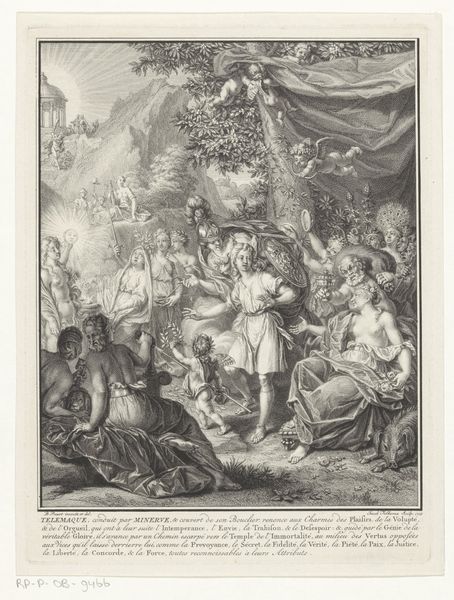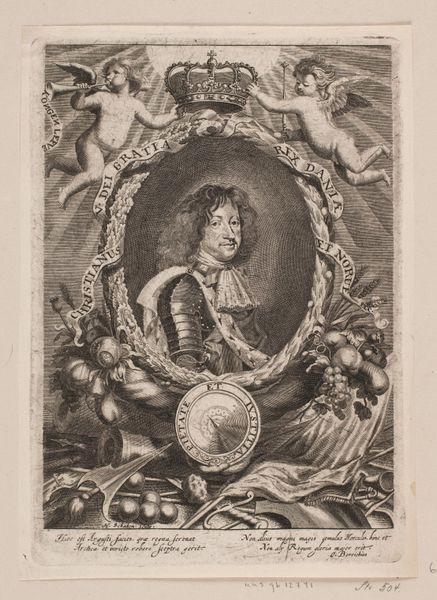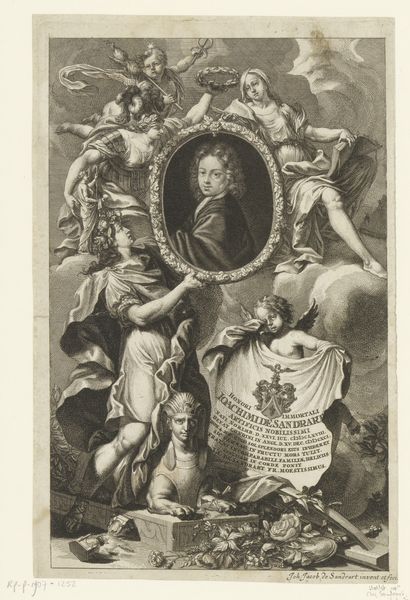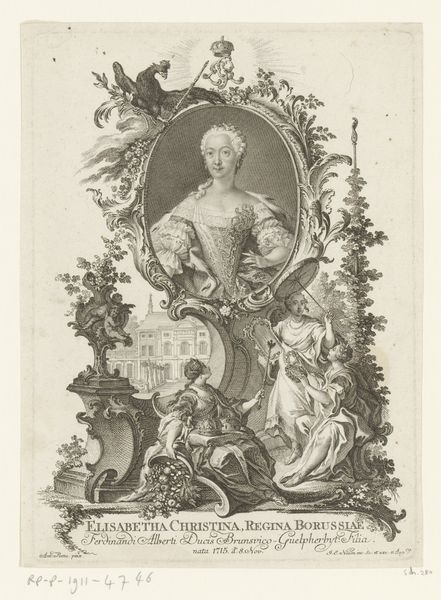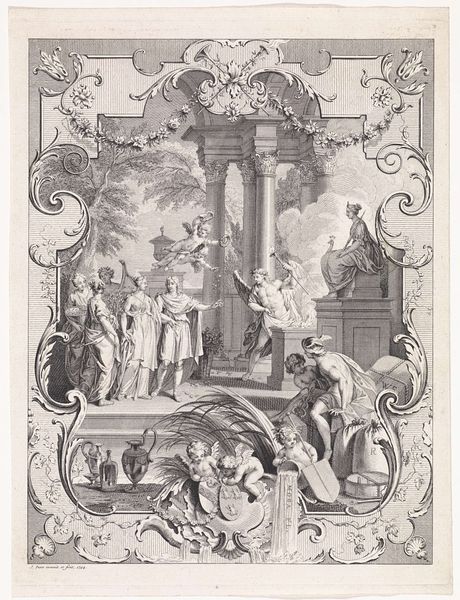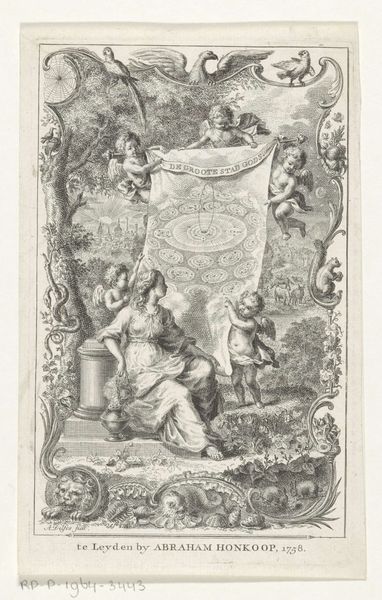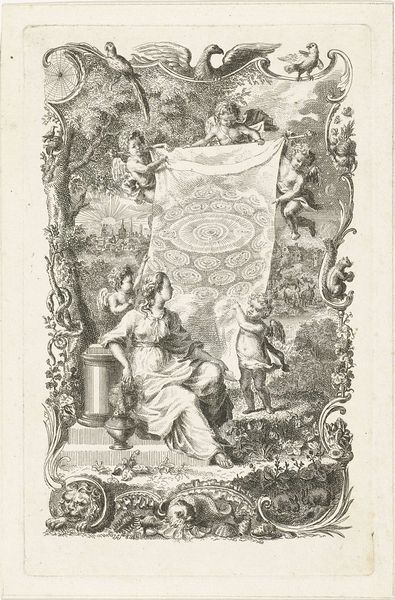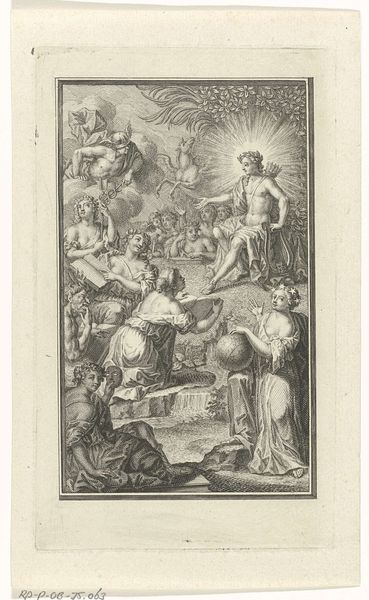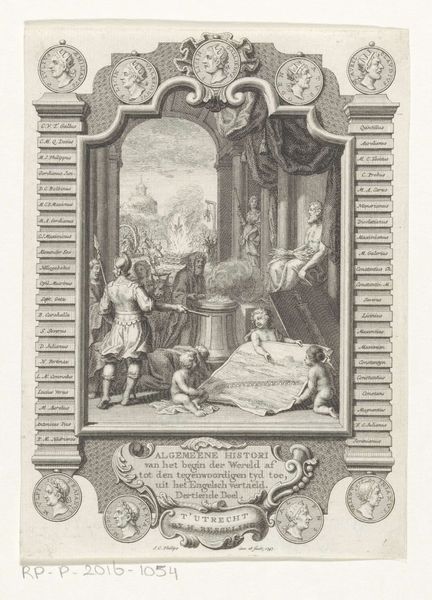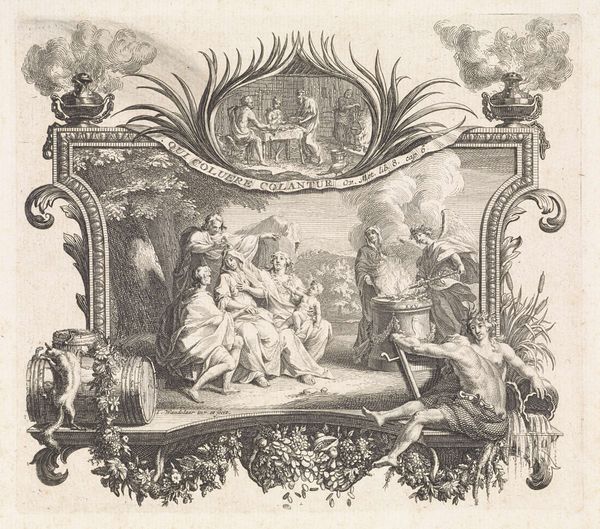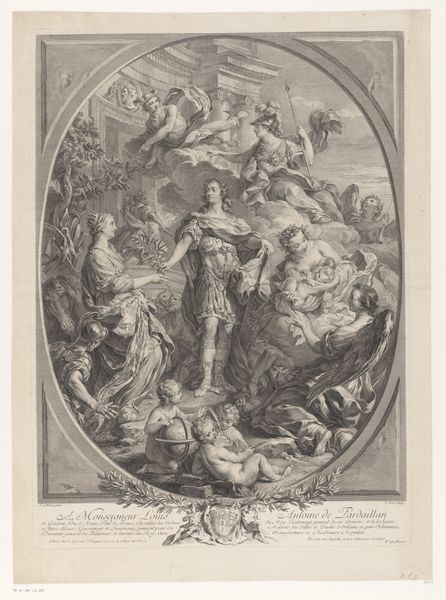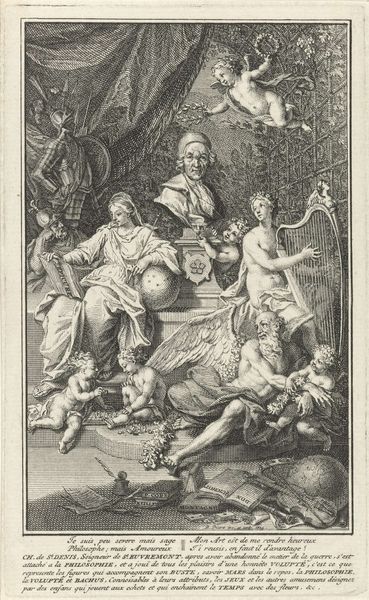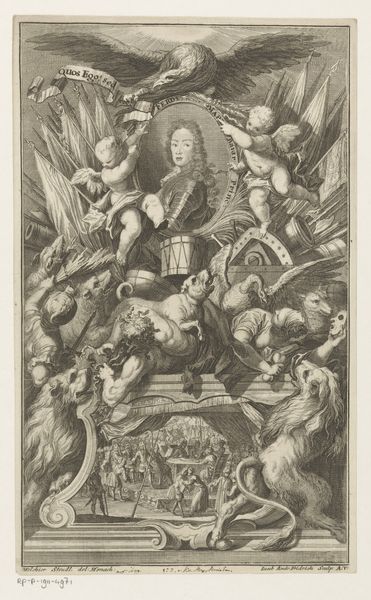
Portret van Bernard de Fontenelle, met personificaties van de zeven vrije kunsten 1727
0:00
0:00
bernardpicart
Rijksmuseum
print, engraving
#
portrait
#
allegory
#
baroque
# print
#
engraving
Dimensions: height 304 mm, width 200 mm
Copyright: Rijks Museum: Open Domain
Curator: Looking at this elaborate 1727 engraving by Bernard Picart, titled "Portret van Bernard de Fontenelle, met personificaties van de zeven vrije kunsten," my first impression is one of dense complexity. What catches your eye? Editor: The overwhelming sense of classical allegory certainly commands attention! I’m immediately struck by the intricate textures created through the engraving technique. The figures and foliage nearly blend into a tapestry of line and tone. Curator: Indeed. Picart has presented us with more than a mere portrait. This print served as the frontispiece to Bernard de Fontenelle’s collected works. It aims to depict him surrounded by allegorical representations of the seven liberal arts, celebrating Fontenelle's wide range of intellectual pursuits. Editor: See how Fontenelle is placed centrally, framed within an oval and slightly elevated above the assembled arts. It's a visual hierarchy, but executed with considerable grace, almost as if he is emerging from the landscape of knowledge. Curator: The landscape provides the crucial social context of intellectual pursuits. Notice the putti, the flowing robes, the laurel wreaths – each a symbol loaded with cultural meaning. In his lifetime, Fontenelle contributed significantly to disseminating scientific ideas to a wider public, an effort visualized through these references to classical antiquity. Editor: Absolutely, the figures' poses are artful. Note how the figure representing Rhetoric gestures with an open hand, suggesting eloquence and persuasive power. And the placement of Geometry beside Arithmetic; their interrelationship underscored. Curator: These visual connections were meant to communicate a very specific ideal of learned society. It reinforces the image of Fontenelle as a prominent figure in the Parisian intellectual circles of his time, fostering dialogue and exchange between science, literature, and the arts. The Baroque frame itself seems to further set off these elite circles from those excluded. Editor: It certainly feels very purposeful! Though I confess I find the overall effect somewhat…crowded. All those tiny, meticulously engraved lines! The eye struggles to find a resting place amidst the riot of figures and symbols. Curator: Well, in a sense, that visual overload reflects the era’s enthusiasm for encyclopedic knowledge. Everything, it seems, had to be incorporated and displayed to its full glory. A worldview not entirely foreign to our own digital age, would you say? Editor: Perhaps. Though now I think about how artistic expression shifts its public role between ages. Regardless, a fascinating print offering many avenues for inquiry and visual investigation. Curator: Agreed. Hopefully our listeners now have a broader understanding of this Baroque piece and how it connects to the social values of the 18th Century.
Comments
No comments
Be the first to comment and join the conversation on the ultimate creative platform.
